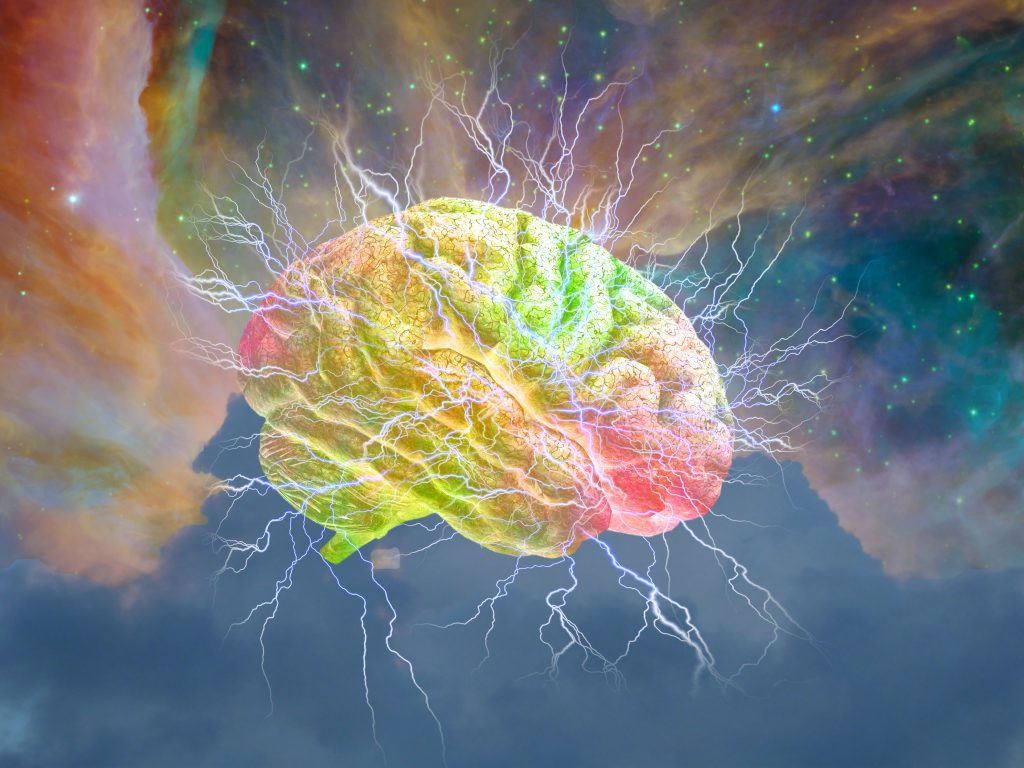As eating habits and sedentary lifestyles make us balloon out as a general population, for some, it’s about losing weight, and for some its about gaining it. New research into psychedelics show they can be an effective treatment for eating disorders like anorexia and bulimia, where self-image and control can play a big role in a person’s eating habits, as well as overeating disorders like binge eating.
Considering how many bad eating issues are out there, it’s nice to know that a better treatment method might be on the way. Psychedelics for eating disorders represent just one of the many uses this pretty awesome drug class offers. We’re dedicated to bringing you all the important stories in the growing industry of psychedelics, both on the medical and recreational front! For more articles like this one, sign up for the Psychedelics Weekly Newsletter, to keep a mainline to all the psychedelic news going on in the world today.
Eating disorders
First and foremost, eating disorders are not medical conditions, they are psychiatric issues. What this means is that there will never be a test to establish that a person has one of these disorders. Rather, the diagnoses are made by psychiatrists based on their opinions of behaviors. Therefore, it’s good to remember that diagnoses are not rules, and different doctors can offer different diagnoses, meaning that diagnoses are subjective in how a specific doctor interprets behaviors.
An eating disorder is generally described as a disorder “in which the people experience severe disturbances in their eating behaviors and related thoughts and emotions. People with eating disorders typically become preoccupied with food and their body weight.” This definition applies to both sides of the spectrum. Those who eat too much, and those who eat too little.
As per the National Eating Disorders Association (NEDA), about 20 million women and half as many men will develop an eating disorder sometime in life. This number is higher in other publications, like The National Institute of Mental Health, which says that approximately 1/4 of college students fall prey to eating disorders. Though different doctors are able to give different diagnoses, the following categories of behaviors are what are looked for when making eating disorder diagnoses
Types of eating disorders
There are six main categories of eating disorders.

#1 Anorexia-Nervosa is the most well-known, or at least the one most associated with the idea of having an eating disorder. Sufferers of anorexia generally limit their food intake, often to the point of noticeable starvation. Anorexia tends to come with BDD – Body Dysmorphic Disorder, in which the sufferer sees their own body in a distorted way, with a general negative connotation. People who have anorexia are very focused on their weight and image, and though it typically affects women, it can be seen in men as well.
#2 Bulimia-Nervosa is another commonly known eating disorder which is similar in some ways to anorexia. In the case of bulimia, however, the sufferer does eat, but follows a binge-purge cycle in which large amounts are eaten in a short time, and then purged back out. Binge periods are characterized by their lack of control, and purging can be done through vomiting, as well as excessive exercise, enemas, laxatives, and diuretics. This is also more commonly experienced in women.
#3 Binge eating might not be thought of as a disorder by some, but it is considered an eating disorder. Binge eating is characterized by the person consuming excessive amounts of food, but with no attempt made to purge it afterwards. Binge eating might be the most common eating disorder, though many people will simply call it ‘overeating’. This behavior is seen commonly in the overweight and obese population. In both this case and bulimia, the binge eating shows a massive lack of control, and the eating in both cases is often accompanied by feelings of shame, guilt, and embarrassment. This has to be a consistent behavior in order to receive the diagnosis.
#4 Pica, #5 Rumination disorder, and #6 Avoidant/Restrictive Food Intake disorder, are all lesser known eating disorders. Pica is defined by an individual feeling hunger for things that are not food. This can involve nearly anything from dirt to rocks to soap, which can obviously cause problems if a dangerous substance is eaten. This disorder is usually experienced by children, pregnant women, and those with mental disorders.
Rumination disorder is characterized by a person regurgitating their food, before chewing again and re-swallowing it. The reflux happens within a half hour of eating and is voluntary. This is a newly recognized disorder which affects both sexes, and which usually sorts itself out in infants. Avoidant/Restrictive Food Intake disorder is about a disturbance in eating habits, which is related to lack of interest, smell, texture, temperature, or something like that. This disorder has nothing to do with food being available or not, and is way more extreme than simply being picky.
Psychedelics as a treatment for eating disorders
Psychedelics are mind-altering compounds in the category of hallucinogens, which are psychoactive drugs. Beyond creating hallucinations, wherein a user has a sensory experience that doesn’t exist, psychedelics are also known for promoting feelings of euphoria, well-being, connectedness, spirituality, and of causing life-changing experiences. There is even a theory that psychedelics are what allowed our brains to evolve. Though this is obviously just theory, it does come with the reasonable idea that psychedelics can change the way we think.
Since eating disorders are about the way people think, and therefore behave, the idea of altering these thought patterns could mean the ability to change how a person behaves with food. As such, according to the authors of the 2021 article Psychedelics and Eating Disorders, the two ways psychedelics stand to help with symptoms of these disorders are: “1) the potential to alleviate symptoms that relate to serotonergic signaling and cognitive inflexibility, and 2) the induction of desirable brain states that might accelerate therapeutic processes.”
1 – Serotonergic signaling and cognitive inflexibility
Psychedelic drugs like LSD, psilocybin, and DMT are known to disrupt the default mode network – DMN, which is often thought of as where the ego resides in the brain. Explain writers Adele Lafrance, PhD and Reid Robison, MD, “The DMN is a collection of pathways that govern our self-image, our autobiographical memories, and our deeply ingrained beliefs and thought patterns.”

They go on to explain, “While results from brain imaging studies in eating disorders are diverse, findings seem to converge on a common theme of overactivity in the DMN, showing up in our clients as rumination over caloric intake and food rules, compulsive exercise or eating behavior patterns, body checking, etc.”
Why does this matter? Well, “like a ski slope, the mind develops and strengthens pathways as we repeat patterns. Every time the thoughts and actions are engaged, the grooves get deeper and deeper, and before long, no matter where we start, we’re likely to slip into the same ruts and end up following the same path down the mountain. When a psychedelic medicine is ingested, the DMN is downregulated, and it’s like the mind benefits from a fresh coat of powder.”
This creates a new slate, which means a break from known patterns, which in turn allows for new connections to be made in the brain, which can lead to new patterns being formed.
2 – Induction of desirable brain states
The second way in which psychedelics might offer help for eating disorder patients, is by the psychedelic drug helping to promote desirable brain states that might be able to quicken therapeutic recovery. “Specifically, the increased neuroplasticity observed with classic psychedelics and ketamine can also be leveraged in the context of psychotherapy.”
For example, “Brain imaging after being administered MDMA shows decreased amygdala activation, and the reduced fear response that follows allows the client to emotionally engage in therapy without becoming overwhelmed by anxiety or negative affective states.”
The authors point to the oft mentioned (by me) MAPS (Multidisciplinary Association for Psychedelic Studies) study into MDMA for PTSD, which is in Phase 3 of its trials. They pointed to the Phase 2 trials, and how after 12 months, 67% of these treatment resistant cases, no longer qualified for PTSD. That says quite a bit about the ability of a drug to help change brain structure.
As one of the participants in the MAPS study stated: “I’m tempted to say MDMA gave me ‘hope,’ but that word isn’t right—the insight was more substantive than hope. I’d held the sensation in my body; I understood, at a visceral level, what might someday be mine: the sense of peace and joy within my body. For me, the therapeutic process could unfurl from there.”
Data was also analyzed from ayahuasca ceremonies in which people with eating disorders participated. According to one participant: “I still experience periods of feeling anxiety, but I feel like they don’t last as long, whereas before, I would spiral downward and get depressed and then start to restrict and start to purge and binge and all of that. I feel like I can notice when my energy is changing, and then I am more able to be with it and sort of resist it, and then it moves after.”

Research into psychedelics for eating disorders
Though there is not yet a large array of published research on the topic, more is being done of late. This isn’t to say that nothing exists from the past, however. This study was published in 1998, Treatment of compulsive behaviour in eating disorders with intermittent ketamine infusions, which assessed the use of ketamine for compulsive thoughts related to eating disorders. The idea being that “memory is a neocortical neuronal network, excitation of which involves the hippocampus, with recall occurring by re-excitement of the same specific network. Excitement of the hippocampus by glutamate-NMDA receptors, leading to long-term potentiation (LTP), can be blocked by ketamine.” Basically, its saying that memory is like a network. That exciting this network creates specific pathways in the brain, that recall can then re-excite. And that ketamine can possibly block this process.
The study involved 15 treatment resistant eating disorder participants, who were given 20mg infusions of ketamine an hour for 10 hours, along with 20mg twice a day of nalmefene, an opioid antagonist. (Opioid antagonists keep participants from losing consciousness from the ketamine.) Treatments were given at intervals of between five days and three weeks. Nine participants showed significant and prolonged decreases in Compulsion scores after the ketamine therapy. As in, they had fewer compulsive behaviors related to eating.
In six cases there was no significant decrease in these behaviors when at least five treatments were administered. The investigators posit that this could be because the compulsive behaviors were re-established too quickly after the infusion, without allowing new connections to be made; or that the nalmefene might have been dosed too low. Even with these six cases, the idea that 60% of treatment-resistant cases were significantly helped, speaks volumes to the possibilities of what ketamine can do. Considering nothing was done to try different dosing, its even quite possible that the six participants who did not show significant results, might have with a little tweaking to the study. Why it is that this was done in 1998, and there seems to be no follow-up, is the bigger and scarier question. It seems something was found here, and then completely buried.
Conclusion
Whether its too much or too little, the idea of bad eating habits to the point of an eating disorder, is way more commonplace than many people think. Though with a quickly expanding (sideways) population, maybe it shouldn’t be. That psychedelics might be an answer to eating disorders and their associated behaviors, is just another benefit that these drugs are offering, along with tons of other benefits like help with PTSD, treatment resistant depression, addiction, and other psychological, and physical ailments.
Hello and welcome to CBDtesters.co, your #1 web spot for the most ground-breaking and important independent coverage of cannabis and psychedelics-related news. Join us frequently to stay aware of what’s happening in the always-changing industries of cannabis and psychedelics, and remember to sign up for the Psychedelics Weekly Newsletter, so you’re never late on getting the news.
Hi, I’m a researcher and writer. I’m not a doctor, lawyer, or businessperson. All information in my articles is sourced and referenced, and all opinions stated are mine. I am not giving anyone advice, and though I am more than happy to discuss topics, should someone have a further question or concern, they should seek guidance from a relevant professional.







